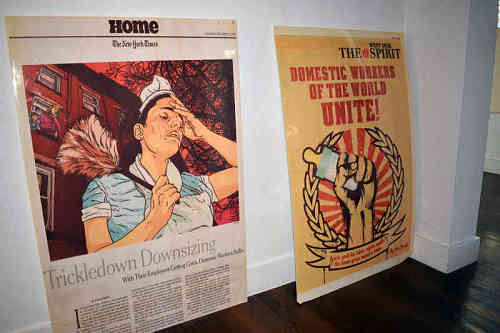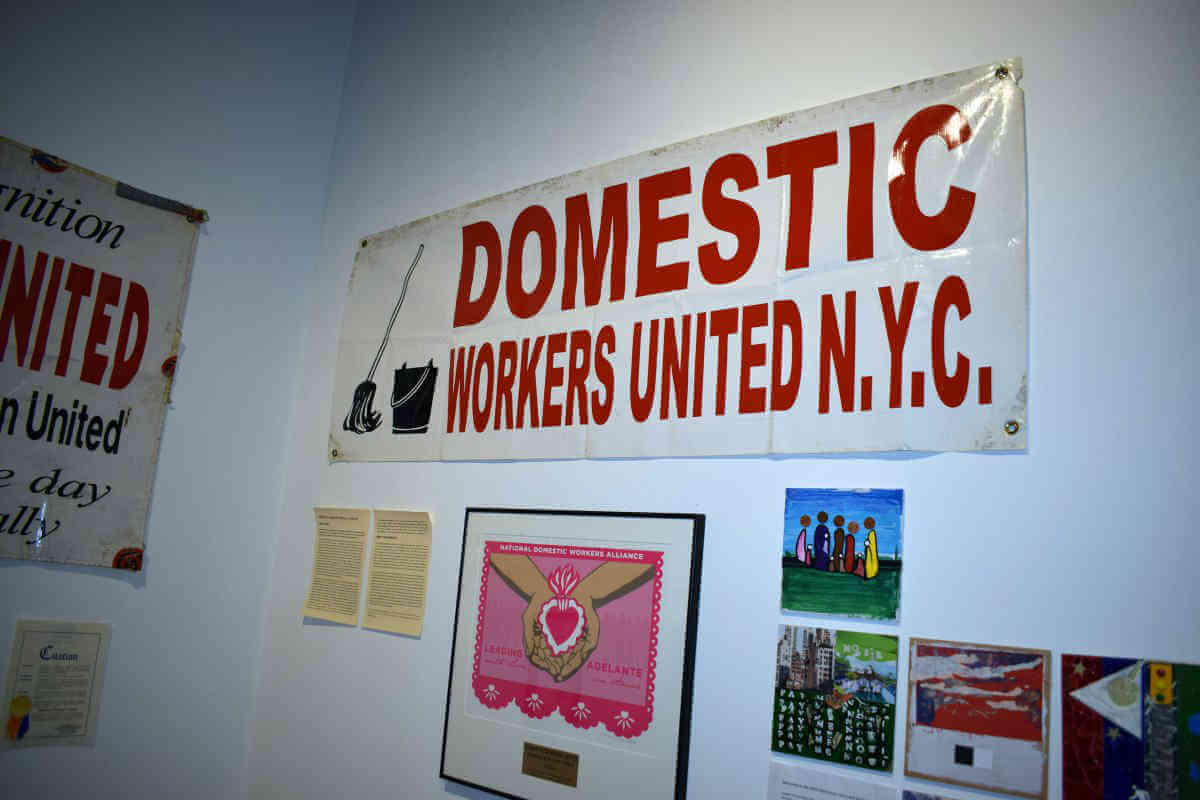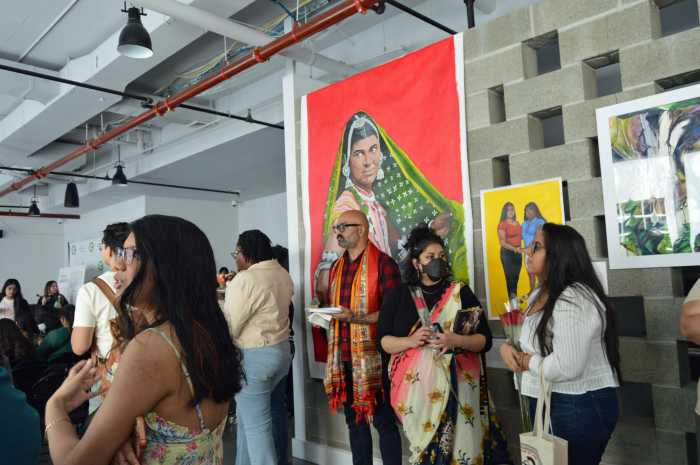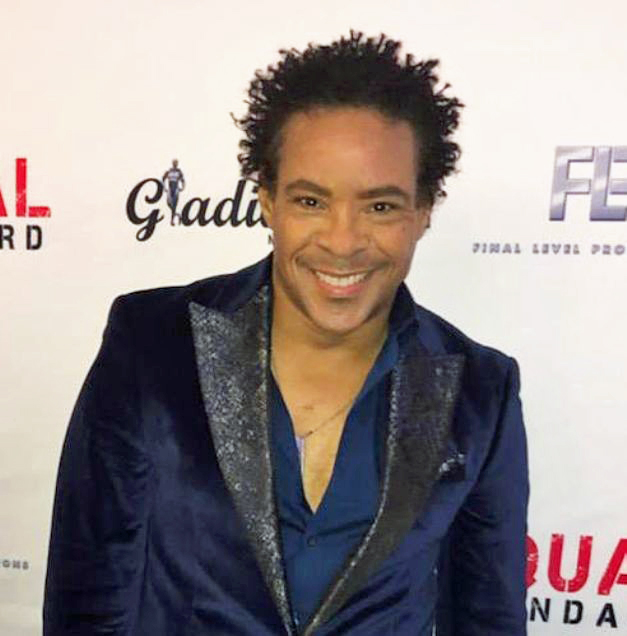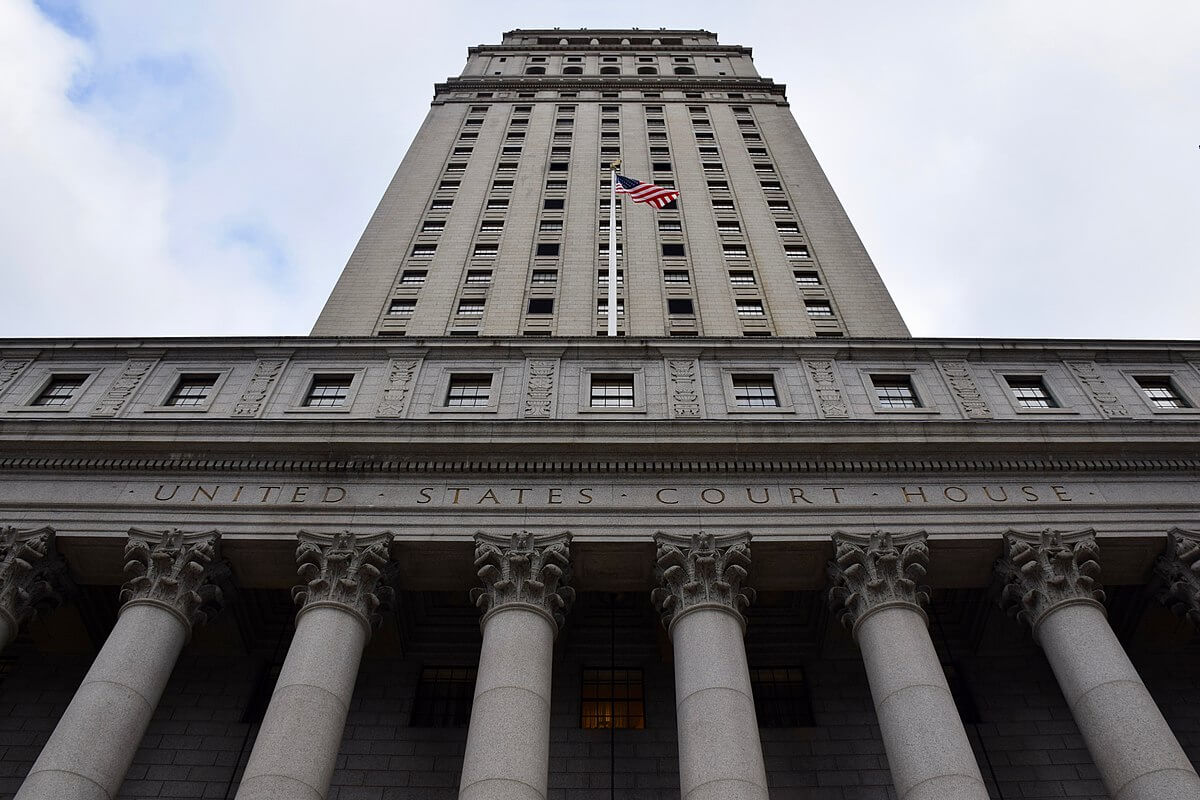It’s a shed of light on their fight.
A new exhibit on display at Arts East New York is showcasing the stories of domestic workers now until Jan. 12. The “Domestic Worker’s United History Exhibition (Art)ifacts from DWU’s Archive and Worker Stories Kiosk!,” is a brief timeline of the organization’s battles and successes.
Through various pieces of material, such as banners, fliers, brochures, and media clips — the exhibit chronicles the fight leading up to the passing of the domestic workers Bill of Rights, which passed in 2003, through the eyes of the Brooklyn-based advocacy group — Domestic Workers United (DWU). In partnership with the art gallery through a grant, the group tells their story, journey, and conclusive success of legislation, said exhibit co-curator and DWU coordinator.
“This exhibit shows the 18 years of the Domestic Workers Union, our protests for domestic workers who didn’t get the right wages, and our stories,” said Christine Lewis.
Many of the pieces in the exhibit, such as the banners, were actually used in several of the group’s demonstrations for decades. Their inclusion in the display gives visitors a glimpse of the issues important to domestic workers, and the types of messages they wanted to champion.
“Some of the banners were in many of our protest and rallies, and these were the genesis of the Domestic Workers Union,” added Lewis.
As part of their aim to bring understanding about the types of challenges domestic workers in the city have had to overcome, Lewis says the exhibit brings forth the everyday stories and struggles nannies, sitters, and other at-home caretakers often encounter, and how they navigate their lives outside of work.
“Some of these stories talk about where they came from, how some of these women feel invisible, their leisure plans, and their pay,” said Lewis.
She adds that their narratives, which are often ignored, is worthy of acknowledgement and even reflects their credit to a larger phenomenon for well-to-do families.
“It’s important that these stories are told because these are the women doing the labor that allows many families to be successful,” she added. “These women are the ones that allow their employers careers to flourish and who makes this possible, and it’s not New York’s little secret anymore.”
Some of the most standout pieces in the exhibit are media clips from newspapers and magazines, highlighting the DWU’s advocacy through the years. One of them is a magazine cover from The Village Voice, depicting a domestic worker with multiple arms managing different tasks at once. Lewis says it’s a metaphor for all the titles domestic workers often operate.
But more importantly, Lewis said equal and fair pay remained a vital concern for DWU and workers. She said despite the domestic workers bill of rights, many women are not aware of its existence and may feel hesitant in demanding the pay they deserve. She says spreading the word to the newer waves of domestic workers and employers can be a challenge, but maintains that this exhibit is an informative look into what these women deal with.
“It’s a beautiful thing to raise a child that’s not yours, and these women are leaving their homes everyday to raise thousands of children — it’s good work and they should be paid fairly,” said Lewis. “But it’s fulfilling work as long as they are compensated because we see the cost of living up. There’s no shame in this work, but part of treating these workers right and with dignity is compensating them fairly.”
Lewis says despite years long of affirming domestic work, it still carries a stigma, which she fervently fights to change. She also says while this exhibit mainly exists to reach those who are not familiar with the group’s work, Lewis also wants people who are or know domestic workers, that it is an organization they can turn to regarding their concerns.
“Knowledge is power and there’s a lot of people who don’t know about the bill of rights, and there’s an influx of new parents and mothers coming in everyday who want childcare,” she said. “I hope that this is exhibit is uplifting because we are trying to show people what’s right, and this is a movement to educate and look out for our workers.”
“Domestic Worker’s United History Exhibition (Art)ifacts from DWU’s Archive and Worker Stories Kiosk!” at ARTs East New York [534 Livonia Avenue between Williams and Alabama avenues in East New York, (718) 676-6006, www.artse

